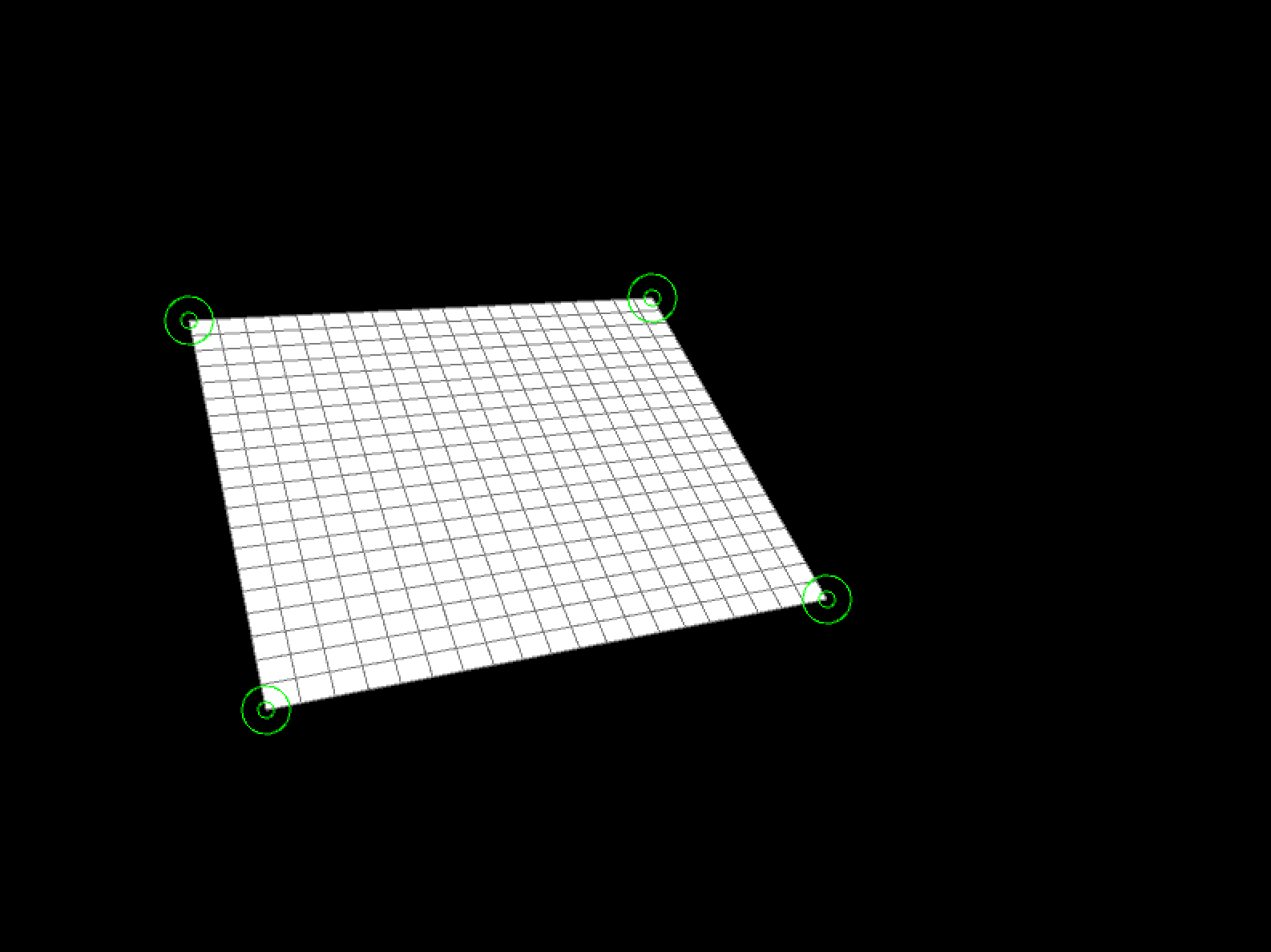Processing Keystone
There is a simple library called Keystone for Processing that enables projection mapping.
You can download the library using the built-in library manager in Processing.
Basic Example
The following example shows a basic usage with one mapped surface:
import deadpixel.keystone.*;
Keystone ks;
CornerPinSurface surface;
PGraphics offscreen;
void setup() {
// Keystone will only work with P3D or OPENGL renderers,
// since it relies on texture mapping to deform
size(800, 600, P3D);
ks = new Keystone(this);
surface = ks.createCornerPinSurface(400, 300, 20);
// We need an offscreen buffer to draw the surface we
// want projected, note that we're matching the resolution
// of the CornerPinSurface.
// (The offscreen buffer can be P2D or P3D)
offscreen = createGraphics(400, 300, P3D);
}
void draw() {
// Convert the mouse coordinate into surface coordinates
// this will allow you to use mouse events inside the
// surface from your screen.
PVector surfaceMouse = surface.getTransformedMouse();
// Draw the scene, offscreen
offscreen.beginDraw();
offscreen.background(255);
offscreen.fill(0, 255, 0);
offscreen.ellipse(surfaceMouse.x, surfaceMouse.y, 75, 75);
offscreen.endDraw();
// most likely, you'll want a black background to minimize
// bleeding around your projection area
background(0);
// render the scene, transformed using the corner pin surface
surface.render(offscreen);
}
void keyPressed() {
switch(key) {
case 'c':
// enter/leave calibration mode, where surfaces can be warped
// and moved
ks.toggleCalibration();
break;
case 'l':
// loads the saved layout
ks.load();
break;
case 's':
// saves the layout
ks.save();
break;
}
}
Multiple Surfaces
You can map multiple interfaces by using multiple CornerPinSurface and PGraphics objects.
